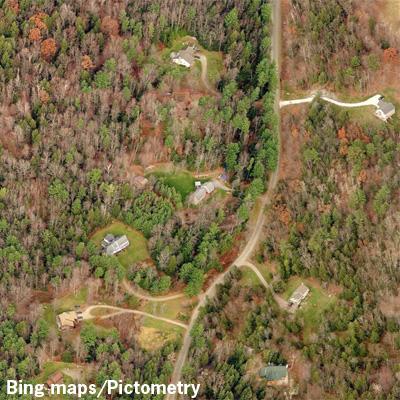Analysis of the Drivers of Urban Growth and Second Home Development in the Northern Forest Region of Vermont

Vermont’s Northern Forest increasingly faces fragmentation pressures from encroachment of urbanized areas and scattered development of residential properties. New development in already built-up areas leads to a marginal decrease in forest cover, while isolated rural development, often for vacation homes, leads to the greatest forest fragmentation because construction of access roads and driveways creates a larger development footprint.
To evaluate impacts of future residential development in Vermont’s Northern Forest, NSRC researchers used the land use change model UrbanSim and Geographic Information Systems (GIS). They predicted where development is likely to occur, how it will affect forest habitat, and how the resultant land use pattern might change under alternative infrastructure investment and policy scenarios, such as construction of new Interstate highway exits and more stringent implementation of the Current Use forest property tax program. Using pre-determined population forecasts, researchers modeled residential development over the next 25 years based on soil type, slope, housing density, and proximity to retail establishments, ski resorts, and protected areas. They then mapped forest cover change based on results of the model.
Researchers found that new development will lead to increased forest fragmentation regardless of proposed policy or investment decisions. Construction of new interchanges on Interstates has potential to make large areas much more accessible, thereby increasing development and fragmentation. If the Current Use program had higher financial penalties for development of properties enrolled in the program, it could steer new development away from forested lands. A close coordination between infrastructure development and policy implementation would help to increase accessibility to rural regions while protecting critical landscapes.
Download printable version [PDF]
Download full final report [PDF]
